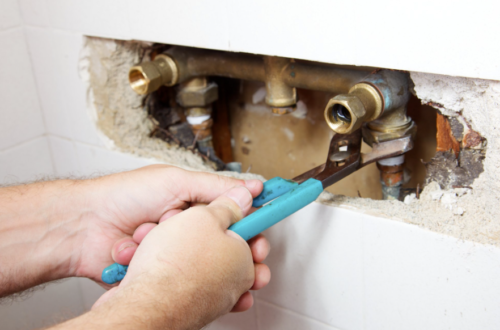To fertilize a lawn properly, you must determine the type of your grass. Once you do that, you can establish the best time for fertilization. Mow the grass 3–4 days before you fertilize lawn. Then water the grass one night prior to applying the fertilizer with the spreader or garden sprayer.
Are you new to lawn maintenance and hoping that the first time’s a charm? Unfortunately, there is no magic that can help your grass grow – you’ll have to apply some fertilizer for it to thrive.
If you are wondering how much fertilizer your lawn needs and what is the best time and method to apply it, you’re in luck cause I am about to answer these questions. I have a lot of experience since I went through quite a lot of trouble when I was establishing my lawn. So, stay tuned and avoid making the same mistakes I did!
Do’s Of Applying Lawn Fertilizer
- Find out what kind of grass you have so you can determine the best time to fertilize it
- Mow your lawn 3-4 days before you fertilize it
- Lightly water your lawn the night before you fertilize it
- Apply lawn fertilizers in the morning or early evening (or at least on a cloudy day)
- Use a fertilizer spreader (check for proper spreader setting on the fertilizer package)
Don’ts Of Applying Lawn Fertilizer
- Do not use the fertilizer too early or too late – proper timing is everything!
- Do not scatter fertilizer with your hands
- Do not water your lawn for 12-24 hours after using liquid lawn fertilizers
- Do not wait for more than 24 hours to water the fertilized lawn
- Do not over-fertilize your lawn, as it could be harmful to the environment (some states have laws that regulate the use of fertilizers, such as the Maryland Lawn Fertilizer Law passed in 2011. Check state regulations)
Step-By-Step Guide To Applying Lawn Fertilizer

According to Lucy Searle, global editor-in-chief of UK’s Homes & Garden magazine, fertilizing is a must if you want a healthy and lush lawn. Here is her step-by-step guide on how to do it:
Prepare Your Lawn For Fertilizer
Mow your lawn three or four days before fertilizing it. Ideally, you should aerate the lawn and remove all the weeds too. If your lawn needs dethatching, this would be a great time to do that as well.
Finally, treat your grass with some light watering the night before fertilization. If the soil is too dry, the grass won’t be able to absorb the beneficial nutrients and all your work will be in vain.
Use Fertilizer Spreaders To Scatter The Fertilizer
I used to scatter the fertilizer with my hands, and the results were not the best, as I couldn’t achieve even coverage. Since I bought a drop spreader, my grass is looking better than ever. So, you should invest in one too! I have a hand-held spreader since my lawn is not very large, but my parents have a push-along spreader they use on their farm. If you want to use liquid fertilizers, you can buy a garden sprayer.
Extra Tip:
Using a spreader near the edges of your lawn can be a bit tricky. I have a simple piece of advice to avoid any mess: If some of the fertilizer lands on hard surfaces near your lawn, simply sweep it back onto the grass.
If you are a visual learner, here is a great video I have found that will help you apply grass fertilizer:
Water The Lawn After Fertilizing
Lawn care experts from Willis Lawn services advise you to wait 12-24 hours before watering your grass if you have used liquid fertilizer. This is because this type of fertilizer has to remain on the leaf surface for at least a couple of hours in order to be absorbed. But if you wait more than 24h, your grass might get scorched by the chemicals.
On the other hand, there is no need to wait at all when using granular fertilizer because it is actually activated by water. You can thus apply it during light rain too. This is why I prefer using granular fertilizers – I do all the work at once, so there is no need to come back the next day to water my lawn!
Why Use A Lawn Fertilizer?

As I read in the DIY Guide to Florida-friendly fertilizing issued by the Southwest Florida Water Management District, there are many reasons to fertilize your lawn, as long as you do it in accordance with the recommendations issued by the United States Environmental Protection Agency (EPA). Here are some of the advantages of using fertilizers:
- They help your lawn stay green and healthy over the year
- They promote leaf and root growth
- They help your grass recover from drought stress or pest damage
- They help eradicate weeds
When To Apply Grass Fertilizer?

Timing matters, says Dr. Yam Kanta Gaihre from the International Fertilizer Development Center. Proper timing of fertilization is a must if you want to secure maximum uptake and prevent losing valuable nutrients to the environment. If you apply fertilizer before your grass actually needs it or you are too late, you expose nutrients to potential loss (especially when you use nitrogen fertilizers as the soil does not retain nitrogen for long).
So, when is the best time to fertilize your lawn? Unfortunately, the answer to that question is not a simple one. It depends on where you live and what type of grass you are trying to grow.
Warm Season Grasses
Bruce Anderson, an extension forage specialist from the Institute of Agriculture and Natural Resources at the University of Nebraska, advises you to fertilize warm season grasses in early spring, preferably at the beginning of May, but you can do it in late May too. This will help your grass grow rapidly when the temperatures start to rise.
Cool Season Grasses
Lawn and garden experts from renowned Pennington company state that cool season grasses should be fertilized in late summer or early fall. Depending on your region, you should best do it six weeks before the first frost.
The Best Time Of The Day To Apply Fertilizer
The lawn care professionals from Jonathan Green, a family-owned supplier of grass seed, soil enhancers, fertilizer, and organic lawn and garden products, advise you to apply lawn fertilizer in the morning. This way, you will avoid the hottest part of the day and minimize the risk of burning your grass. The morning dew will help your grass absorb the valuable nutrients too.
As I am not really a morning person, I apply my fertilizer either in the early evenings or on cloudy days. You can do that too.
How Much Fertilizer Should You Use?

Lawn grasses do not know how much food is good for them, that is why you have to be careful not to overfeed your lawn. More isn’t always better. When exposed to too much nitrogen, phosphorus, or potassium, lawn grasses become weak and more susceptible to disease.
Shawn N. Jasper, the Commissioner at New Hampshire’s Department of Agriculture, Markets, & Food, says you have to always follow the label directions on the fertilizer package. I always check the fertilizer bag for instructions on how to adjust my spreader settings too.
How Often Should You Apply Lawn Fertilizer?

If you want a beautiful healthy lawn, the experts from Cornell University advise you to perform a soil test (nutrient analysis) to determine fertilizer timing and rates. The soil test will show you what nutrients your lawn needs and whether or not you need to apply fertilizers at all. It will also help you determine the right fertilizer you need to use and how much of it to apply.
I usually fertilize my lawn two times a year. In spring, to help it grow faster and stronger, and in fall, to help it cope with the cold winter. Many homeowners do it three times a year. You can decide for yourself whether or not your lawn requires the third application, but beware – according to NH Department of Agriculture, excess fertilization can result in non-point source pollution that harms water bodies.
FAQs
Should lawn fertilizer be applied to wet or dry grass?
Lawn fertilizer should be applied to damp grass. If the grass is too dry, it might get scorched. If it’s too wet, the chemicals can run off into neighboring water bodies and contaminate them. For this reason, the Mid-America Regional Council warns not to fertilize lawns before heavy rainfall.
Should you water your lawn after applying fertilizer?
You should not water your lawn after applying fertilizer. According to lawn care experts from Willis Lawn Services, you should wait 12-24 hours before watering your grass when using the liquid fertilizer, or you might wash off essential nutrients before the grass absorbs them.
Should I mow before or after liquid fertilizer?
You should mow before liquid fertilizer. Grass needs time to absorb liquid fertilizer. Besides, mowing wet grass can damage it. According to an article from Hunker magazine, experts generally recommend first mowing, then fertilizing.
Final Thoughts

I have guided you through the best ways to fertilize a lawn – now you are ready to give it a try and secure healthy growth of your grass. Remember to perform the soil test and choose the appropriate fertilizer depending on whether you are growing warm or cool-season grasses
When you fertilize a lawn properly and regularly, you help it grow strong and dense. You also keep it safe from diseases, pests, and weeds. So get busy and share this story with your friends and neighbors too! If you need help, you know where to find me.






